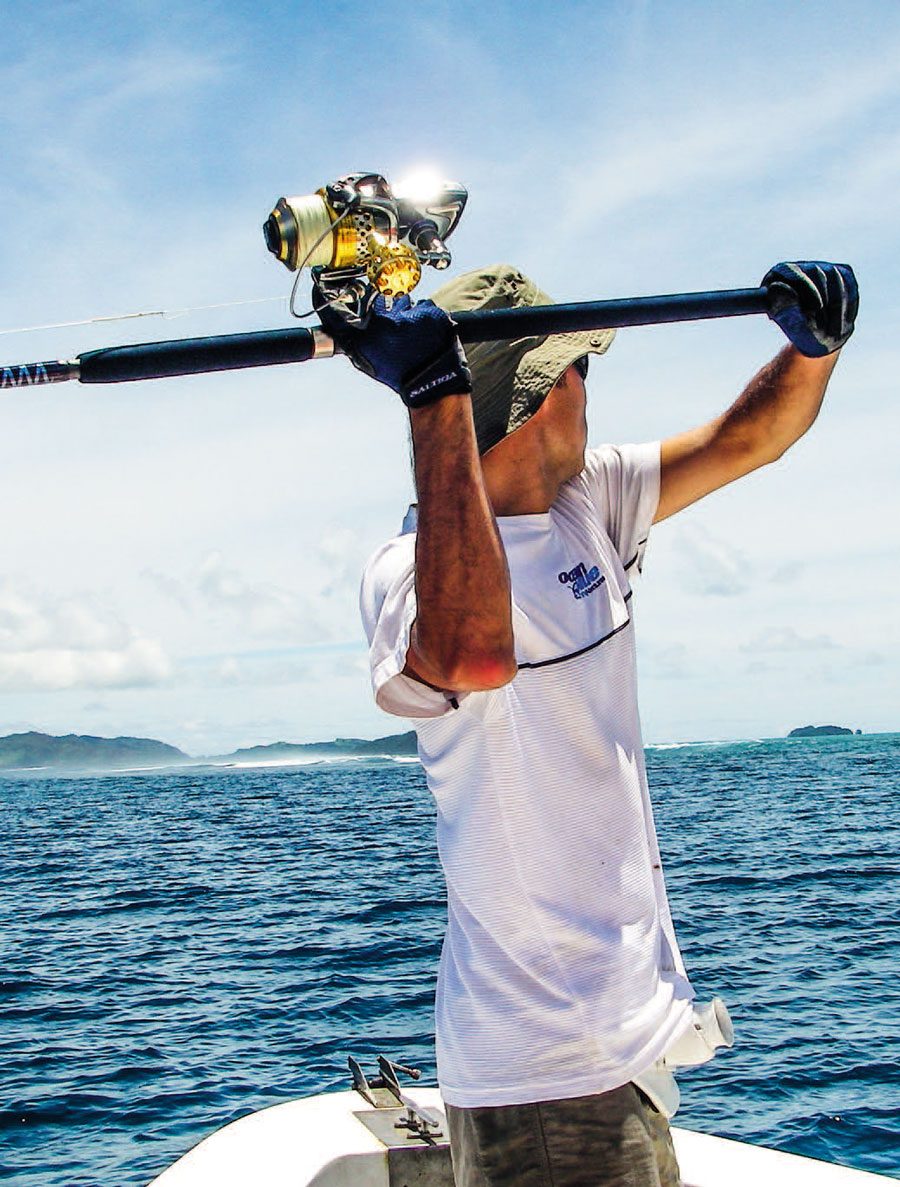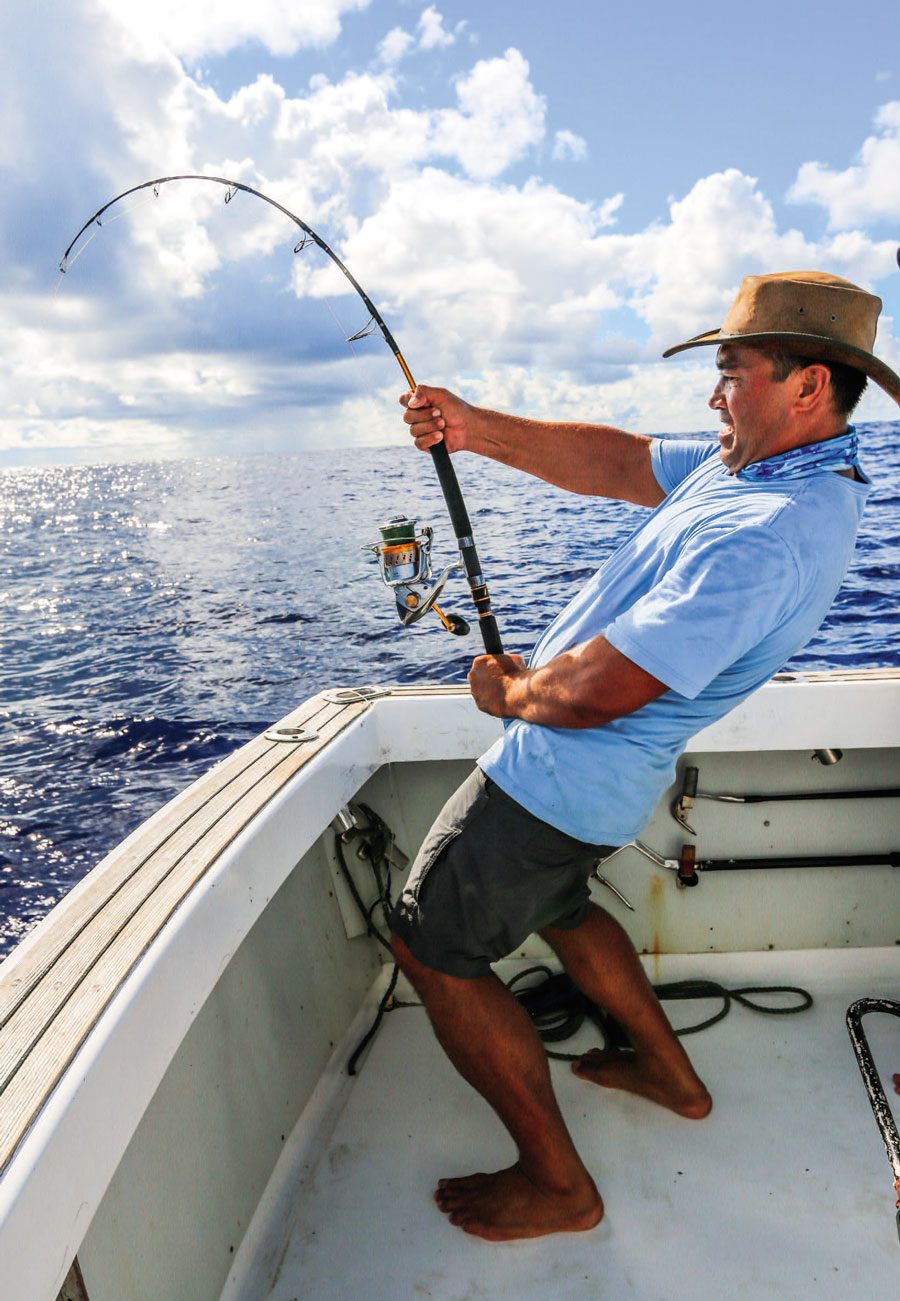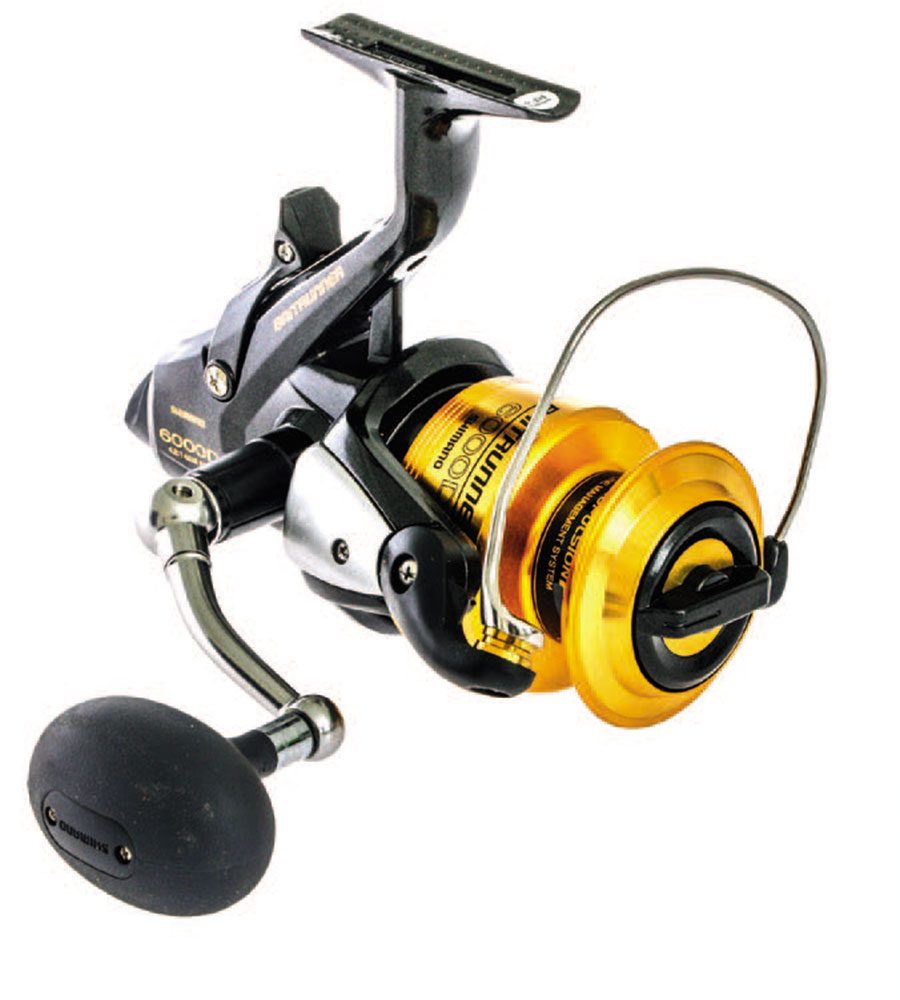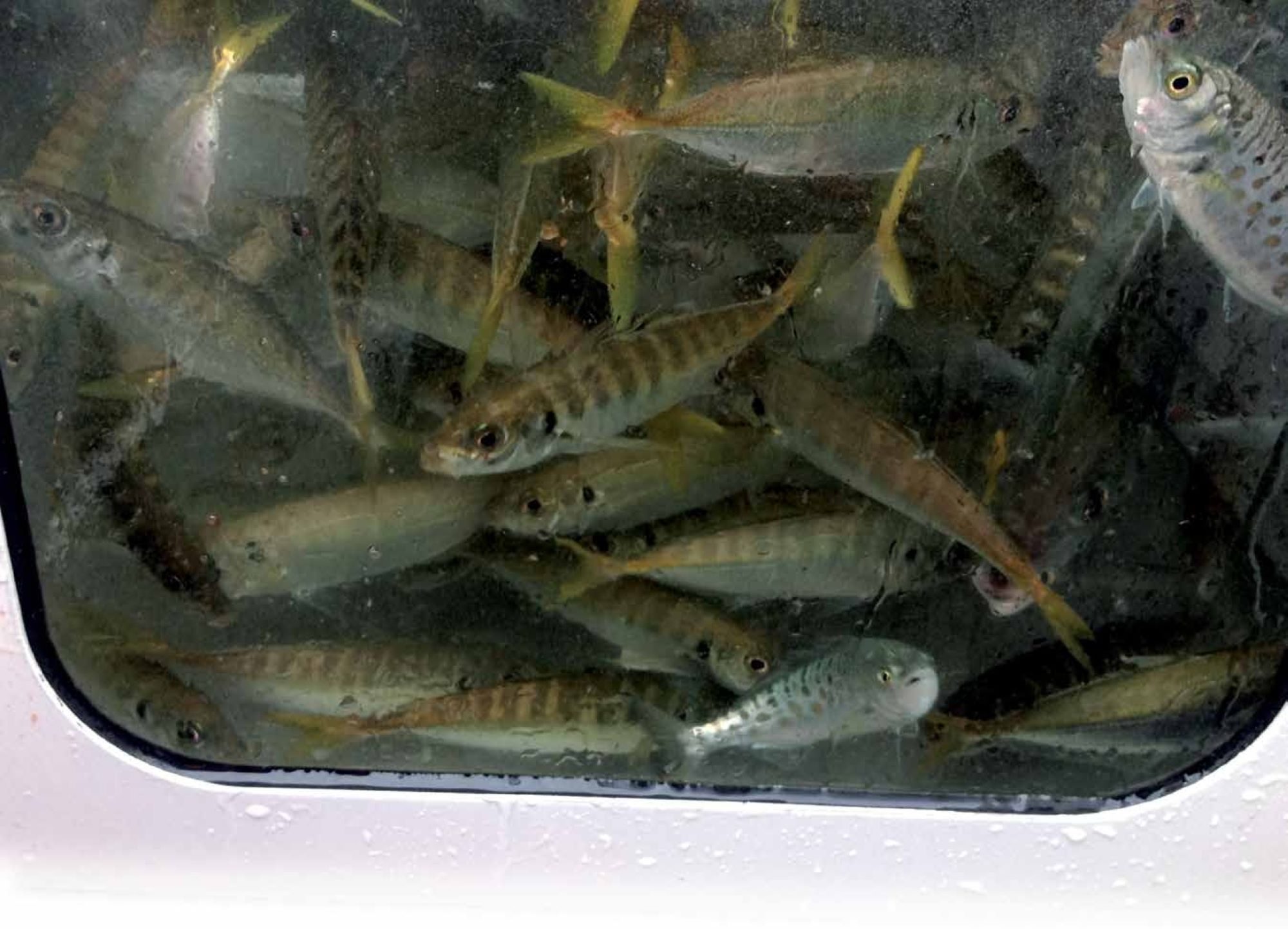

Fishing success – or lack of it – is greatly influenced by an angler’s skill level and choice of fishing gear. Taking time to learn the basics can make all the difference.
You have to start somewhere! Not everyone knows enough to grab their fishing gear and head out fishing confident of success.
So, for readers new to fishing and wanting to understand the basics, or those of you still struggling to put some of the bigger pieces of the fishing jigsaw together, these articles are for you.
First, you need to decide whether you want to follow the bait or lure fishing route – each has its pros and cons.

Spinning outfits are easier to cast.
FISHING WITH BAIT
There are some understandable attractions to using bait. The simple concept of pinning something tasty on a hook to catch dinner goes back hundreds of years and is deeply ingrained. Also, the idea of kicking back in the sun while waiting for a bite, the rod in the holder and a frosty beverage in hand has considerable appeal.
To get the best from bait, you need the right equipment. This generally means a rod of around 7-8ft (2.1-2.4m) in length with the ability to handle 8-15kg line, matched to a reel loaded with around 300m of suitable line.
I can just picture a bunch of you rolling your eyes and thinking: “No bloody way! That’ll never fit in the boat locker!” Fortunately, there are plenty of rods that break down into two pieces for storage.

Heavy-duty outfits can tackle big fish.
The reason for recommending a decent rod length comes down to casting distance. Longer rods cast further, which is nearly always an advantage, because the boat’s shadow and any unusual noises the boat makes can scare nearby fish away – especially when the water is relatively shallow (i.e. less than 20 metres or so). If you can’t present your bait well away from the boat you’re at a great disadvantage, since you won’t reach those warier, often larger fish holding at a distance.
Also, the strikes or hook-sets you make in response to bites are more effective because the extra rod length picks up more of the line’s slack and stretch resulting in more direct contact with the hook for a better hook-set in the fish’s mouth.
Intending anglers should consider starting off with a spinning style outfit, as they offer many significant advantages over freespool/overhead reel combinations – initially, anyway.
 Free-spool reels mount on top of the rod. Photos: NZ Fishing News
Free-spool reels mount on top of the rod. Photos: NZ Fishing News
First and foremost, spinning gear is easier to operate. Simply open the reel’s bail-arm and the line is freed so you cast out a bait or drop it straight onto the water. A firm turn the reel’s handle automatically flips the bail-arm back into place, trapping the line ready for the retrieve. Start winding and the line is automatically laid evenly on the spool.
Rods meant for spinning reels are identified by their guides: if the guide nearest the reel is reasonably large and the guides steadily decrease in size towards the much smaller tip guide, the rod is designed for a spinning reel. This large ‘stripping’ guide captures the line spiralling off the reel during the cast, with the smaller guides acting like a funnel to control the line. The sequentially smaller guides minimise line friction by preventing the line slapping against the rod as it unloads from the reel. Spinning reels hang down under the rod.
If the rod has more guides and of decreasing but more uniform size along the rod’s length it is intended for a freespool or overhead reel. Freespool reels are positioned on top of the rod so they can be more easily accessed and controlled.

Bait-runner style reels offer significant advantages to anglers of every skill level. Photo: Alex Simpson.
I personally prefer free-spool outfits for fishing baits as their design allows me to stay in much better touch with my lightly weighted stray-lined baits, but they are more complicated to operate – we’ll discuss this in more detail later.
So what spinning reels suit newbie bait fishers best? Well, it’s hard to beat ‘bait-runner’-style spinning reels, as they have revolutionised bait fishing.
Equipped with two separate drag systems, the first one controls the amount of ‘bite and run’ tension on the line. Adjusted with a dial at the base of the reel, it exerts just enough pressure to control the line when a fish moves off with the bait without alerting it to potential danger.
The second drag-pressure system is on top of the spool. It is the main ‘strike then fight’ drag most people are familiar with – your reel’s emergency-release system to avoid line breakage. Drag pressure should be set by rotating the drag knob one way or the other before fishing commences. It should not be adjusted after a fish is hooked, no matter how much line is spooling off the reel. Releasing line under pressure is what a reel drag does to prevent the line breaking!
Baitrunners are great, but the more basic style of spinning reel will work well for you too, especially if you mostly use weighted ledger rigs. And lightly weighted strayline baits can still be fished effectively if you’re prepared to take a more active role fishing them.
To ensure the spinning rod and reel are compatible, look at their recommended ratings and capabilities. You will usually find this information on the rod just above the fore-grip – it will tell you the ideal line breaking strain range and the maximum sinker/lure weight.

Although a great option for beginners, more skilled anglers can get excellent results from spinning reels, too. This fish is a nice mahimahi. Photo: NZ Fishing News.
The reel will have the line capacity specifications written on the spool. These usually cover the maximum capacity for nylon and braid lines in metres/yards as well as by line diameter. The reel should hold at least 200m of the chosen line class (but 300m is better). A reel capable of holding 300m of 10kg breaking strain is a good start.
What constitutes a full spool of line? Spinning reels are considered fully loaded when the line is within 2-3mm of the spool’s lip. Loading the spool any more risks big clumps of line flying off all at once; insufficient line on the reel results in extra friction as the line drags up and over the spool lip, reducing casting distance.
Some people will debate my suggestion to use nylon for bait fishing rather than braid. It’s true that braid, being thin with minimal stretch, has some significant advantages.
With braid you can use smaller, more compact reels and any bites are transmitted more efficiently through the line to the angler, provided the line is taut.
However, these same qualities often allow fish to feel the angler at the other end of the line and realise something’s not right, resulting in just a tentative bite and then nothing. I’ve also had sessions where the braid outfit didn’t get a single bite – not even a little nip followed by rejection. Don’t ask me why.
Nylon, on the other hand, is much thicker in diameter for the same breaking strain and relatively elastic. It therefore doesn’t cut through the water as well, which makes feeling bites harder, especially in deep water. But on the plus side, it’s much cheaper, its stretch acts like a shock absorber when fish suddenly rush away, and nylon tends to help mask the angler’s presence at the other end on the line.
In my next installment we will discuss some useful basic baitfishing rigs and knots. BNZ




